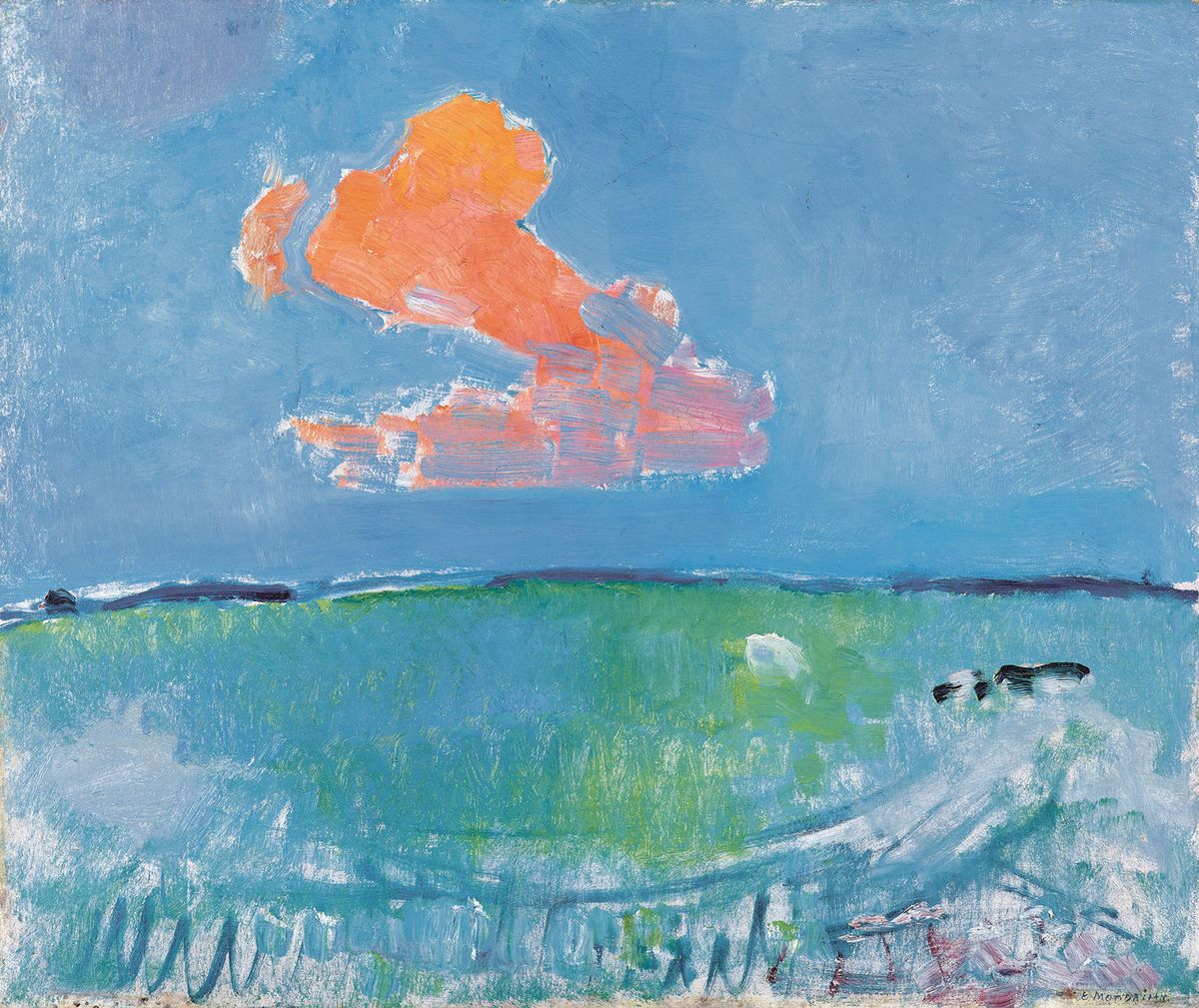Ulf Küster, the senior curator at Fondation Beyeler, counts off the loans in Mondrian Evolution, the exhibition he has spent three years putting together. There is The Red Cloud (1907), which “rarely travels” from its home in The Hague; Woman with Spindle (around 1893), “the earliest work in the show, lent from a private collection and not often seen”; and Composition in Black and White, with Double Lines, painted in 1934 and taken to the United States soon after. “Nearly nine decades late, this will be its European debut,” Küster laughs. Of all the Beyeler’s 82 loans, though, the ones that give him the greatest pleasure are the quartet of paintings called Farm near Duivendrecht (around 1916). One has come from Chicago, another from Dallas. “We have managed to reunite four of the five of Mondrian’s depictions of the scene,” Küster says, with a satisfied nod.
This is more than the contentment of a (nearly) complete set. There is a tendency in curating Piet Mondrian’s work to write its history backwards. So surefooted do the post-1919 grid paintings seem, so orderly, that it is tempting to see them as somehow inevitable. Everything that went before—the 1890s genre paintings, the eye-popping theosophical Symbolist works, the Cubist canvases made in Paris after 1911—was merely a preamble to those Neoplastic compositions. As the four farm paintings show, though, the truth was far less tidy.
“He was inspired by Cubism, but he never forgets nature. Even in Paris, he was always doing his own thing”Ulf Küster, senior curator
Early abstraction
“The usual view of the Duivendrecht paintings is that they show Mondrian, back in the Netherlands, returning to figuration after his so-called ‘abstract’ period in Paris between 1911 and 1914,” Küster says. “In fact, if you look at them, the 1916 works are just as abstract as ones such as Composition No. II made a few years earlier. Their use of colour is certainly more radical than the muted palette of the Paris works.” Even those are not as they seem. “Mondrian’s so-called ‘Cubist style’ wasn’t, really,” Küster adds. “Sure, he was inspired by Cubism, but he never forgets nature. Even in Paris, he was always doing his own thing.”
With this in mind, Küster has avoided too much tidiness in his own show. If its hang is broadly chronological, it is also thematic. Alongside the farmhouse at Duivendrecht are clusters of windmills, sand dunes and the sea that recur through the Beyeler’s nine rooms, pushing at the boundary between figuration and abstraction. The evolution of the show’s title is in Mondrian’s sense of the word rather than Darwin’s. It is a story not of rejection and survival but of accretion. Nothing was lost, nothing thrown away. In Küster’s telling, the grid paintings become the sum of everything that has gone before them.
This process of building up also turns out to be true of the paintings themselves. Mondrian Evolution marks a double anniversary, the 150th of its subject’s birth and the 25th of the Beyeler’s founding. The foundation’s collection includes seven Mondrians, among them the peerless Lozenge Composition with Eight Lines and Red/Picture No. III (1938). With funding from the Swiss cosmetics firm La Prairie, these have been the subject of intensive investigation, which has thrown up a number of surprises.
The first is the freehand nature of those apparently rationalist grids. Rather than being laid on in a single, decisive brushstroke, Mondrian’s black verticals and horizontals were built up in tentative layers of thin wash. “Up to six of them, sometimes with white paint mixed in,” Küster says. Imaging of one Beyeler painting, Tableau No. 1 (1921-25), revealed the precise charcoal underdrawing of a grid, which Mondrian seems to have rejected not once but twice, the work having been signed three times in four years with significant changes between states. “The process involved freeing himself from that original grid, relying more and more on intuition,” Küster suggests.
Hans Janssen, the veteran Mondrianist, died in December 2021. Küster quotes him: “Hans told me that if he had been able to put on another show, he would have called it ‘Mondrian: Forever Young’. Mondrian’s capacity for reinvention was extraordinary—at 40, at 50, at 70. He never stood still.”
• Mondrian Evolution, Fondation Beyeler, Riehen/Basel, until 9 October


